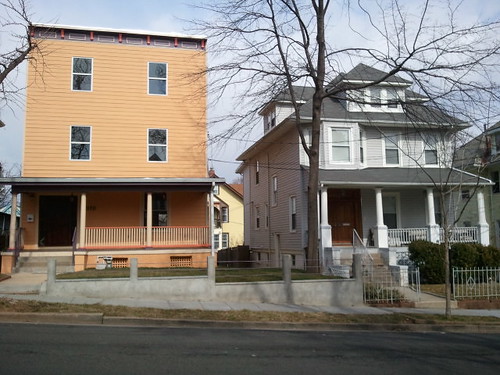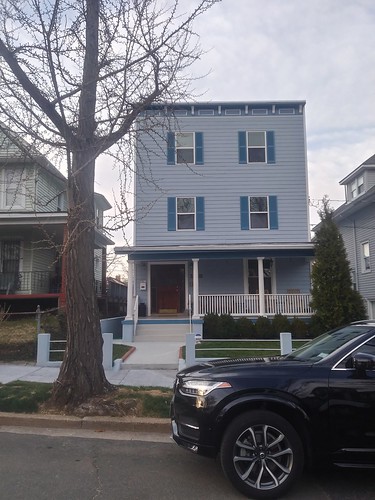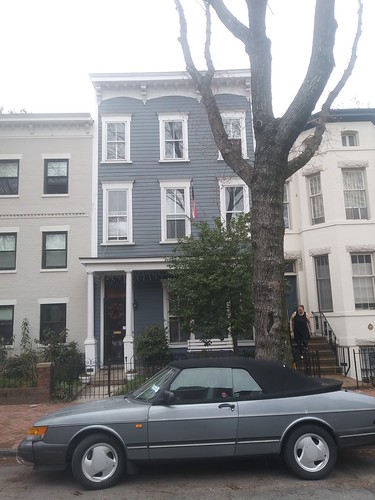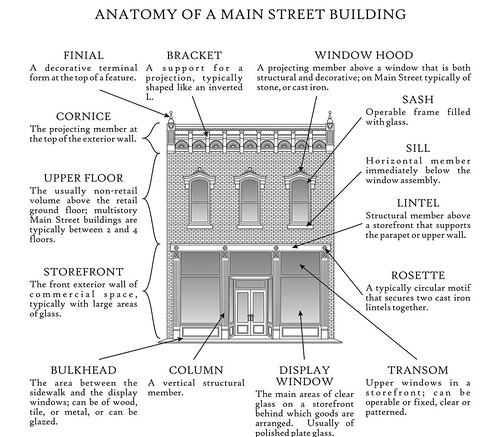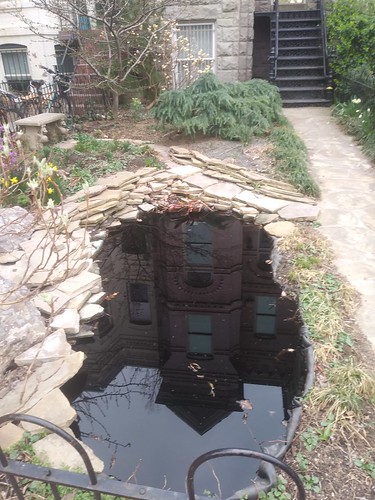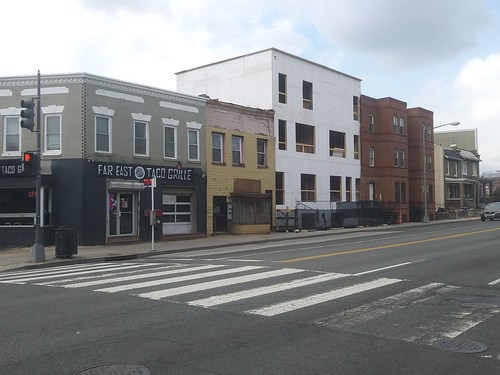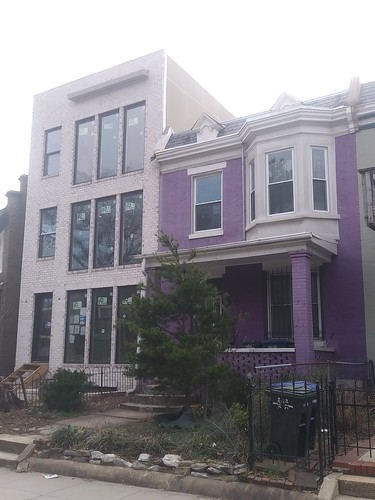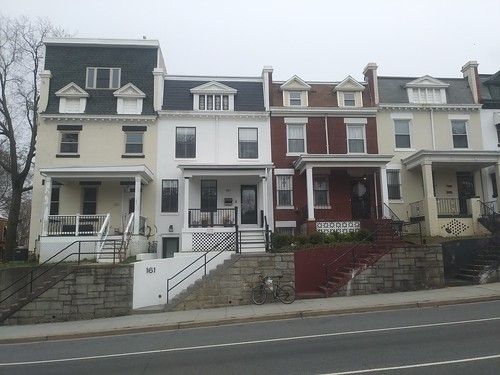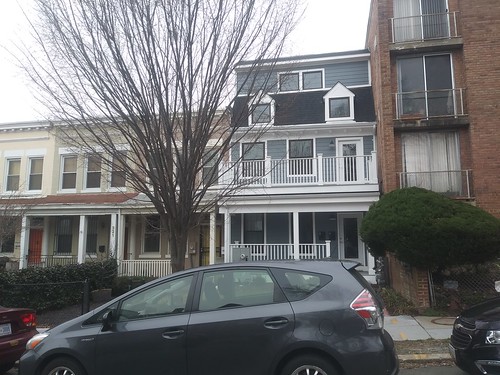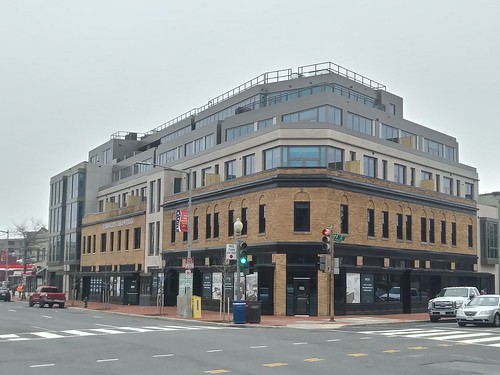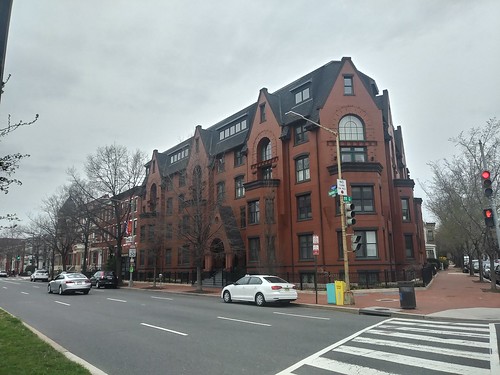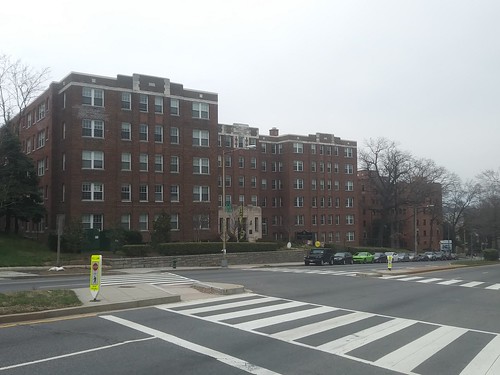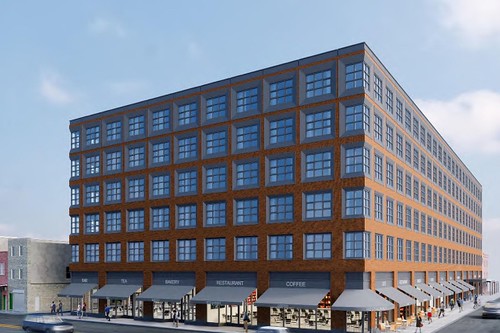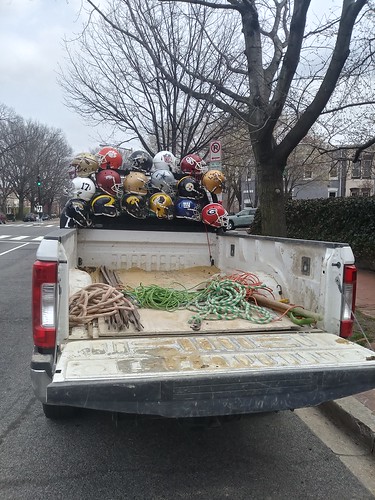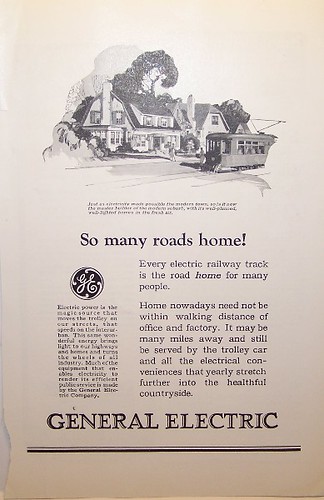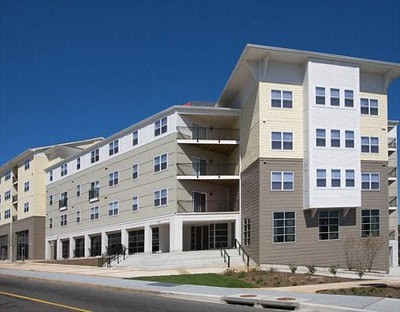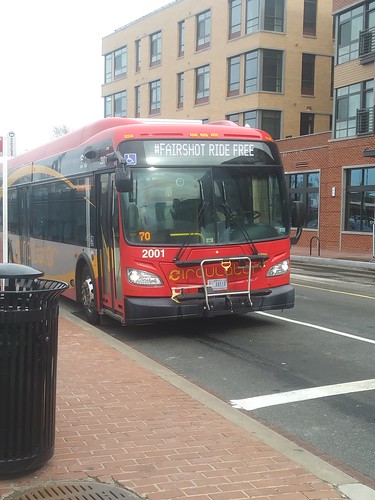
At the Mayor's State of the City address, she announced ("
Bowser proposes commercial tax increase to pay for affordable housing,"
Washington Post) that the DC Circulator bus service will now be free. From the article:
She announced that the city would permanently eliminate the $1 fare on the popular D.C. Circulator bus system, after experimenting with free rides in February and March. “For working people, it adds up,” Bowser said, noting that she has been stopped in the store checkout line and at dinners by people who gushed about the free bus rides. The free rides cost the city about $250,000 a month, officials said.
Last December, Luxembourg announced it will make transit free ("
Luxembourg to become first country to make all public transport free"). That blog entry discusses various free transit initiatives, such as:
Talinn, Estonia has had free transit for a number of years. A handful of cities--Calgary, Pittsburgh, and Salt Lake City--still have free transit zones in their Downtowns as a congestion reduction measure. A number of resort communities also provide no cost transit service as a congestion management tool.
Baltimore has a free Circulator service as well, which is designed to provide intra-city transit especially in the core and highly visited zones, to complement the inter-city regionally oriented service profile of the bus system serving the city and abutting counties ("
Charm City Circulator's new operator has not trained all drivers, faces persistent bus shortage,"
Baltimore Sun).
It's paid for by a tax on parking, but that hasn't generated enough revenue and so they've had to make up funding with other sources.
Recently, workers in Downtown Columbus have been given access to free bus passes as a congestion measure.
Here and there are various particular free bus services, including Circulators of various sorts. Salt Lake City has a free bus line to the State Capitol (
Route 500 - State Capitol Free Fare Zone, which extends outside of the city's free fare zone.
Photo: Jesse Acosta, WBUR-FM/NPR, "MBTA Begins Early-Morning Bus Service Pilot Program."
Boston City Councillors suggest one route be converted to free fare. Just last week, two Boston councilmembers proposed that a specific bus route be turned into a free service ("
Two Boston city councilors want to make the Route 28 Bus free,"
Boston Globe). From the article:
Boston City Councilor Michelle Wu, one of the outspoken advocates in the charge against the price hike, says it’s time for the “next step:” a public discussion on how to ultimately make one of the busiest bus routes in the city, free of charge.
The Route 28 Bus, making stops between Mattapan and Ruggles Station, carries around 12,000 riders on weekdays. The majority of passengers are low-income residents without cars and almost half don’t have a driver’s license, Wu told her fellow councilors this week. ...
“This would be a measure that would also ensure people have no barriers to access that economic opportunity corridor,” Wu said during a meeting Wednesday, where she and Councilor Kim Janey filed their request for a hearing on the proposal. “This is the route I think we need to have the conversation about.”
While what Mayor Bowswer has done or what Boston councillors are proposing are nice things to do, I don't necessarily think it's the right thing to do.
As rich as it is, DC still has more things it would like to do than it has money a/k/a limited financial resources and constraints. Therefore, it makes sense to direct those resources in ways that have the greatest return and impact.
Most of the Circulator bus routes in the city are what I call political bus service. From a usage standpoint, they don't experience particularly high ridership. But most neighborhoods want the service because the cost of the fare (until the speech) is half that of regular Metrobus service.
The bus lines that have the highest ridership are in the core, and like the Baltimore routes are designed to provide intra-city coverage that the trunkline Metrobus lines don't really do. But most of those riders can afford to pay for the service.
One of the downsides of congestion-management focused free transit service is that the beneficiaries tend to be the well off, because they are the ones working white collar jobs in the core (although there are also service jobs too).
I wrote about some of these issues a little over two years ago, "
Is making surface transit free the best transit investment DC can make?." The rest of this post is drawn from that, but revised.
How the city provides bus service. Basically, DC has four types of bus service.
(1)
high frequency service on major arterials, like the bus service on 16th Street NW (S bus) or H Street-Benning Road (X bus), serving major activity centers and transit stations, and usually not extending beyond DC's borders, with the exception of the 70s bus line, which terminates in Silver Spring;
(2)
neighborhood-to-neighborhood bus service between various activity centers and transit stations (like the 62 bus between Takoma and Petworth Stations or the H8 bus which goes from Mount Pleasant to the Columbia Heights Metrorail Station then to the Brookland Metrorail Station and then to the Rhode Island Metrorail Station);
(3)
the Circulator service downtown and in some neighborhoods; and
(4)
private shuttle services between subway stations and campuses, mostly for the universities like Georgetown and Howard, the Washington Hospital Center, although many federal government agencies run shuttle services too.
 Map, Tempe Orbit intra-neighborhood bus service.
Map, Tempe Orbit intra-neighborhood bus service.
To better serve the differing needs of communities, based on transit station proximity, density, and need, I have argued that the city needs to redefine how it provides transit, including the provision of intra-neighborhood service in certain neighborhoods.
I've written about this too in the context of my various "transportation wish lists," ("
Transportation Wish List: 2015 edition, part one, the original list" and "
Part two, new ideas").
The fact is that outside of the service in Downtown and that serving the National Mall during tourist season, for the most part Circulator bus routes duplicate service provided by existing Metrobus routes.
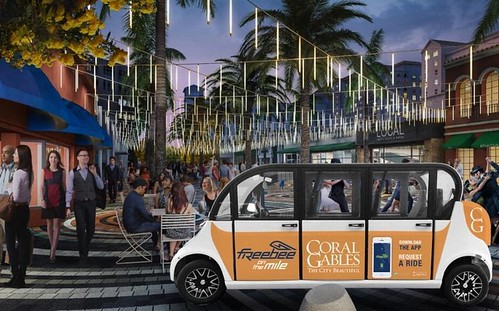 Rendering, intra-neighborhood Freebee Shuttle, Coral Gables, Florida.
Rendering, intra-neighborhood Freebee Shuttle, Coral Gables, Florida.
While I no longer think that DC's transit planning priority should be making surface transit free, the decision by Mayor Bowser should spur us to think about what outcomes do we want from the city transit network and its surface component. and how and what kinds of investments should DC be making concerning improvements in surface transit service.
Free transit is expensive. As an intellectual exercise, I think it's worth considering free transit. But as an op-ed in Planetizen shows ("
Why Is Fare-Free Transit The Exception Rather Than The Rule?") it works in places where overall there isn't that much demand for transit, and in small, constrained places, such as in resort towns. In larger cities, where transit is heavily used, the cost is considerable and difficult for local government budgets to absorb.
Whereas most communities do not have free transit service for primary and secondary routes, some cities like Tempe and Scottsdale in Arizona or the Town of Friendship Heights in Maryland have free intra-neighborhood services that move people from neighborhoods to activity centers and transit stations, but these services complement the broader transit network.
San Francisco considered it (but they have refused to release the final report), but found the increase in the amount of equipment required was beyond the budget. See "
Free ride? Fat chance: Muni fares will stay,"
San Francisco Chronicle.
Note that the free weekly in the Vancouver, BC region, had a nice series on free transit. See "
No Fares! Series,"
Tyee.
Are there better investments we could make in bus transit over making Circulator buses free?
In the metropolitan area, DC generally has the highest ridership buses (although one of those lines originates in Silver Spring, Maryland) with multiple lines having daily ridership between 13,000 and 22,000 riders. But just because we have many high ridership lines it doesn't mean the system is perfect.
The original piece lists seven points. But from the standpoint of providing free transit specifically, there are only two points that really matter. Making these changes rather than making the DC Circulator bus routes free would have a lot more and more focused impact.
1.
Discounting transit for low income residents. Rather than providing free transit to a lot of people who have the means to pay for it we should be prioritizing subsidizing transit service for people of limited means.
I am embarrassed to say that in my various "Transportation Wish Lists" I never listed this as a priority.
(Although, it should be funded as a social service measure rather than a cost to the transit system, and separately and as an addition to monies for the transit system currently appropriated by the jurisdictions.)
While WMATA provides discounted fares for seniors, but not on a means-tested basis, and both DC and Montgomery County provide free or reduced price transit passes for schoolchildren, the DC area does not have a systematic program reducing the cost of transit for the impoverished.
The subsidized fare program offered by
SF MUNI is called the Lifeline Pass, and it's half the cost of a regular monthly pass (their regular fare monthly pass is still very very cheap compared to peer systems), and people must be income qualified to be able to get the pass.
King County Metro in Seattle has a similar program. Hubway,
Boston's bike share program has a similar framework for their low income access program.
More and more cities are creating such programs including Calgary, Denver ("
Denver Approves Low-Income Discount for Transit Riders," NextCity), Halifax, Nova Scotia, Minneapolis ("
Metro Transit will offer $1 fare for low-income riders,"
St. Paul Pioneer Press),
Portland, Oregon ("
Low Income Fares Begin,"
Portland Observer)),
Lincoln, Nebraska and
Los Angeles County, etc.
New York City Council pushed Mayor De Blasio to create a similar system, although it won't include single rides, only week and monthly passes.
Edmonton pay as you go and capping for low income riders. However, Edmonton has proposed that could create the equivalent of a "pay as you go" capping feature for low income riders, which is the method I'd recommend implementing.
For low income riders who can't afford to buy a monthly pass in advance, the "rate capper" will work over the course of an entire month, and once a rider pays in fares the equivalent of the cost of a monthly pass, the discounted price of the pass -- and "free" travel for the rest of the month kicks in ("
New smart cards for Edmonton Transit boast a 'social justice' edge,"
Edmonton Journal).
From the article:
People with steady jobs and good paycheques are the most likely to buy a monthly pass. They have cash on hand at the beginning of the month.
Those who might need their last nickel just to keep the lights on are the most likely to pay cash for every trip. It means they pay $3.25 per ride, more money for the same service.
That’s one reason Ken Koropeski is excited about Smart Fare.
With a card and an online account, the system can track how many times a person uses transit during a 30-day period, said Koropeski, director of special projects for Edmonton Transit. No one would have to commit to a monthly pass on Day 1. Instead, the system could automatically track use and once the rider hits that monthly maximum, all other rides are free.
“When you have capping, it has inherent benefits for people with low income,” said Koropeski.
Rather than spending $3 million making the Circulator free better that we spend $3 million on low income transit passes.
2.
Create intra-neighborhood transit (bus) services so that people can get to and from local services, commercial districts, schools, libraries, and to and from transit stations without having to drive. This includes delivery services of "freight" such as groceries.
In various writings, I call this "tertiary" service/tertiary transit network (based on the Arlington County framework in their transportation plan, which defines a primary and secondary transit network). And it's not like we don't have a form of this now, at least within the city. Most neighborhoods have access to some bus service, although many people may not use it because it is circuitous or because they feel that the bus service is beneath them.
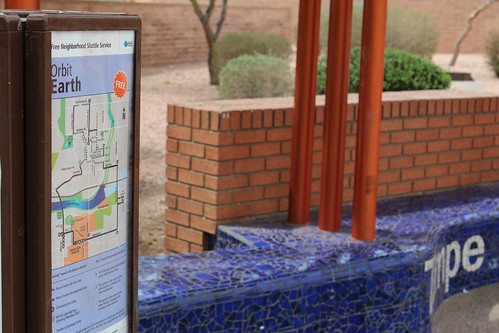
There are many models for what I consider intra-district transit service: including various tourist oriented transit services in places like Savannah or Laguna Beach; the Tempe In Motion bus services in Tempe, Arizona, which serves residents; the Baltimore Circulator which complements metropolitan bus service to Downtown by MTA with intra-district bus service; the FRED service of electric mini-shuttles in Downtown San Diego, Santa Monica, Anaheim, and various communities on Long Island and in and around Miami.
While I no longer recommend making all surface transit free, I do see the value in making tertiary network transit services free. That would take people to and from major transit stations, commercial districts, supermarkets, etc., and home, but wouldn't be free for outside of the neighborhood travel. See "
Intra-neighborhood (tertiary) transit revisited because of new San Diego service," for a more complete discussion.
======
Other items from "
Is making surface transit free the best transit investment DC can make?
- Double deck buses as a repositioning device
- Creating a system of priority bus lanes
- Add Night Owl bus service on subway routes during the periods when the system is closed
- Line extensions/creations. One example would be the extension of the 30s line from its terminus at Friendship Heights on the DC/Maryland border northward to at least Friendship Heights. Another would be service on Connecticut Avenue and Rhode Island Avenue that is more comparable to the trunkline services on major arterials such as 14th or 16th Streets, H Street, or Georgia Avenue. Both of these services should extend some distance into Maryland
- Other improvements. An extensive list of other improvements, such as to bus stop waiting environments, is discussed in the entry "Making bus service sexy and more equitable."
Plus
Labels: bus, bus transit, equity planning, provision of public services, public finance and spending, transit marketing, transportation equity, transportation planning
